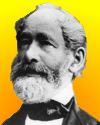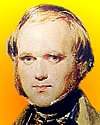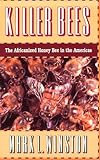 | TODAY IN SCIENCE HISTORY NEWSLETTER - 11 SEPTEMBER |
| Feature for Today |
 Be sure to read today's feature — it is truly remarkable! It describes the social contract for the workers at the Carl Zeiss Works. It was made in 1896, more than a century ago. It's jaw-dropping! If only the present companies treated their workers the same way now. Be sure to read today's feature — it is truly remarkable! It describes the social contract for the workers at the Carl Zeiss Works. It was made in 1896, more than a century ago. It's jaw-dropping! If only the present companies treated their workers the same way now. Carl Zeiss, born 11 Sep 1816, established a business making high-quality optical instruments at a time that demand was increasing in science and medicine. As his business grew, he formed a partnership with Ernst Abbe, an able scientist, inventor and remarkable business organizer. When Carl Zeiss died in 1888, Abbe acquired sole control. Here is the jaw-dropping part. Abbe wanted the fine industry Zeiss and he had built to continue and thrive after them. So, he created a remarkable foundation to which he transferred ownership of the business. The provisions of the foundation had the workers in mind. No high officials could earn more than ten times the average worker's wage. A 40-hours work week. Overtime pay. Paid vacations. Medical care. Profit sharing. Pension. A sick fund. And more! Astonishingly visionary for over a century ago. And the company thrived. For more details, read A Factory That Owns Itself from The World's Work (1912). Special Request: Please contribute your ideas for the five physicists that anyone should know because their work has been beneficial in their life. See the webpage Five Famous Physicists You Should Know. And Why. There is a rubric in which your webmaster has outlined the idea that there are physicists worthy of recognition by the public at large who are relatively unknown. See the first nomination for possible inclusion on the list, and comment if you agree or not.. (Isn't it a travesty that teenagers, and many elders too, know the names of countless sportsmen and bands, but not physicists who have made their lives so much better?) Please use your mail reader reply, or website feedback menu button, to write your suggestions, and why. Thank you. |
| Book of the Day | |
|
| Quotations for Today | |
 | We have already considered with disfavour the possibility of the universe having been planned by a biologist or an engineer; from the intrinsic evidence of his creation, the Great Architect of the Universe now begins to appear as a pure mathematician. |
 | I hope when I get to Heaven I shall not find the women playing second fiddle. (Shortly before her death) |
| [The] weakness of biological balance studies has aptly been illustrated by comparison with the working of a slot machine. A penny brings forth one package of chewing gum; two pennies bring forth two. Interpreted according to the reasoning of balance physiology, the first observation is an indication of the conversion of copper into gum; the second constitutes proof. [Co-author with David Rittenberg (1906-70).] | |
| Quiz | |
| Before you look at today's web page, see if you can answer some of these questions about the events that happened on this day. Some of the names are very familiar. Others will likely stump you. Tickle your curiosity with these questions, then check your answers on today's web page. | |
| Births | |
 | Sir James Jeans, born 11 Sep 1877, was an English physicist, astronomer, and mathematician who was the first to propose a certain theory explaining the present state of the universe.  What was his theory? What was his theory? |
 | Carl Zeiss, born 11 Sep 1816, was a German industrialist who met the needs of scientists for fine instruments of a certain kind. What type of instruments established his worldwide reputation? What type of instruments established his worldwide reputation? |
| Deaths | |
 | Norman L. Bowen (1887-1956) was a Canadian geologist who was one of the most important pioneers in the field of experimental petrology. What is petrology? What is petrology? |
| Events | |
 | On 11 Sep 1999, an 83-year-old man died, the first fatality in California from Africanized “killer” bees. Two weeks earlier he had been stung over 50 times, causing cardiac arrest and resulting in the use of a respirator in an unsuccessful attempt to save his life. “Killer bees” first arrived in Texas some years before. The killer bees spread north at a rate of how many miles per year? The killer bees spread north at a rate of how many miles per year? |
 | In 1831, Charles Darwin and travelled from London to Plymouth with Captain Robert Fitzroy to see his ship. This was Darwin's first sight of the vessel on which he would sail for a voyage of discovery leading to his famous theory of evolution. What was the name of the ship? What was the name of the ship? |
| Answers |
| When you have your answers ready to all the questions above, you'll find all the information to check them, and more, on the September 11 web page of Today in Science History. Or, try this link first for just the brief answers. Fast answers for the previous newsletter for September 10: plasticized PVC (vinyl) • the change in the wavelength of X rays when they collide with electrons in metals • diffraction • steady state theory, whereby the universe is ever-expanding, but new matter is continually created from energy, keeping the density constant • Lincoln Highway • the decade including 1984. |
| Feedback |
 If you enjoy this newsletter, the website, or wish to offer encouragement or ideas, please send feedback by using your mail reader Reply button. If you enjoy this newsletter, the website, or wish to offer encouragement or ideas, please send feedback by using your mail reader Reply button. Your click on a StumbleUpon, Google+ or Facebook social button on the site webpages is also a welcome sign of appreciation. Thank you for using them. |
| Copyright |
| To find citations for quotations go to the corresponding webpage by clicking on the “quotes” balloon icon. Sources for the thumbnails appear on today's webpage with the corresponding item. � This newsletter is copyright 2013 by todayinsci.com. Please respect the Webmaster's wishes and do not put copies online of the Newsletter � or any Today in Science History webpage. (If you already have done so, please remove them. Thank you.) Offline use in education is encouraged such as a printout on a bulletin board, or projected for classroom viewing. Online, descriptive links to our pages are welcomed, as these will provide a reader with the most recent revisions, additions and/or corrections of a webpage. For any other copyright questions, please contact the Webmaster by using your mail reader Reply button. |
--
If you do not want to receive any more newsletters, Unsubscribe
To update your preferences and to unsubscribe visit this link


Δεν υπάρχουν σχόλια:
Δημοσίευση σχολίου